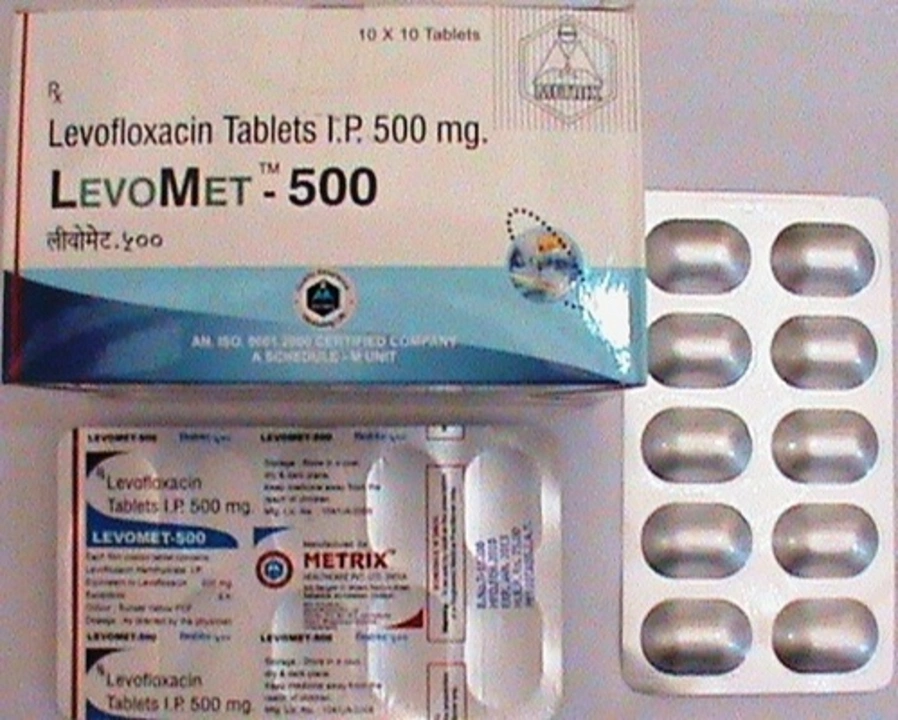Introduction: The Importance of Levofloxacin in Modern Medicine
As a blogger who is passionate about the field of medicine and healthcare, I am always intrigued by the advances and breakthroughs in the development of new drugs and therapies. One such antibiotic that has caught my attention is Levofloxacin. In this article, we will delve into the world of Levofloxacin, its role in modern antibiotic therapy, and what the future holds for this versatile drug.
Levofloxacin: A Brief Overview and Mechanism of Action
Levofloxacin is a broad-spectrum antibiotic belonging to the fluoroquinolone class of drugs. It is commonly prescribed to treat a wide range of bacterial infections, including respiratory tract infections, urinary tract infections, and skin infections. The main advantage of Levofloxacin is its ability to combat both Gram-positive and Gram-negative bacteria, making it a powerful weapon against various pathogens.
The mechanism of action of Levofloxacin involves inhibiting the bacterial enzymes DNA gyrase and topoisomerase IV, which are essential for bacterial DNA replication, transcription, and repair. By inhibiting these enzymes, Levofloxacin effectively prevents bacterial growth and ultimately leads to the death of the bacteria.
Levofloxacin vs. Traditional Antibiotics: A Comparative Analysis
One of the crucial aspects of Levofloxacin that sets it apart from traditional antibiotics is its broad-spectrum activity. While most antibiotics target specific types of bacteria, Levofloxacin can effectively treat a wide range of bacterial infections. This makes it a valuable asset in the fight against antibiotic resistance, as it can be used to combat bacteria that have developed resistance to other antibiotics.
Additionally, Levofloxacin has a higher rate of penetration into tissues, ensuring that it can reach the site of infection more effectively than some other antibiotics. It also has a longer half-life, which means it can be dosed less frequently, making it more convenient for patients.
The Role of Levofloxacin in Treating Multidrug-Resistant Bacteria
In recent years, the emergence of multidrug-resistant bacteria has become a significant concern for healthcare professionals worldwide. These bacteria are resistant to multiple antibiotics, making them difficult to treat and posing a serious threat to public health. Levofloxacin is effective against many multidrug-resistant bacteria, making it a valuable tool for combating these dangerous pathogens.
Levofloxacin has been proven effective against Methicillin-resistant Staphylococcus aureus (MRSA) and extended-spectrum beta-lactamase (ESBL) producing bacteria, among others. Its broad-spectrum coverage and ability to penetrate tissues make it a powerful weapon in the fight against multidrug-resistant bacterial infections.
Levofloxacin and Respiratory Infections: A Potent Combination
Levofloxacin has emerged as a popular choice for treating respiratory infections, including pneumonia, bronchitis, and sinusitis. Its ability to penetrate lung tissue and its broad-spectrum activity against common respiratory pathogens make it an effective treatment option for these infections.
Moreover, Levofloxacin's long half-life enables it to be dosed once daily, making it a convenient treatment option for patients suffering from respiratory infections. This ease of use can lead to better patient compliance and ultimately more successful treatment outcomes.
Addressing Concerns: Safety and Side Effects of Levofloxacin
As with any medication, there are potential side effects and safety concerns associated with Levofloxacin use. Some of the most common side effects include gastrointestinal issues such as nausea, diarrhea, and vomiting, as well as dizziness, headache, and insomnia. However, these side effects are generally mild and can be managed with appropriate care and monitoring.
One significant concern with fluoroquinolone antibiotics, including Levofloxacin, is the risk of tendonitis and tendon rupture. While this risk is relatively rare, it is essential for patients and healthcare providers to be aware of this potential side effect, particularly in patients with a history of tendon problems or those taking corticosteroids.
Levofloxacin and the Future of Antibiotic Therapy
Looking ahead, Levofloxacin will likely continue to play a crucial role in the field of antibiotic therapy, particularly as antibiotic resistance continues to rise. Its broad-spectrum activity and effectiveness against multidrug-resistant bacteria make it a valuable weapon in the fight against infectious diseases.
As researchers continue to study Levofloxacin and other fluoroquinolone antibiotics, we can expect further advances in our understanding of their potential benefits and risks. These insights will help guide the development of new antibiotics and therapies to combat increasingly resistant bacterial infections, ensuring a healthier future for all.
Conclusion: The Versatility and Promise of Levofloxacin
In conclusion, Levofloxacin is a powerful and versatile antibiotic that has proven effective against a wide range of bacterial infections, including those caused by multidrug-resistant bacteria. Its broad-spectrum activity, tissue penetration, and convenient dosing make it a valuable tool for healthcare providers in the fight against infectious diseases.
As we look to the future of antibiotic therapy, Levofloxacin and other fluoroquinolone antibiotics will likely continue to play a significant role in combating bacterial infections and addressing the growing threat of antibiotic resistance. By staying informed about the latest advances in this field, we can work together to ensure a healthier future for all.






Comments (16)